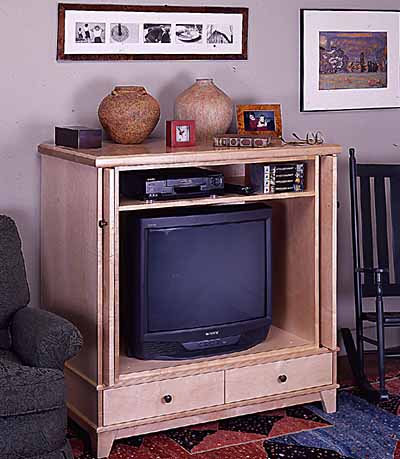Why Grandma Sandy and Aunt Roz don't want an HDTV for Christmas


Answer: Rectangular peg, Square Hole.
With the prices of HDTV's plummeting, one would think that people would be rushing to buy new sets, particularly with the analog TV mass-extinction event coming in February. But the reality is, many people have no intention of replacing their TV sets, preferring to delay the inevitable using a cheap converter box or maintain their existing Cable and DBS Satellite subscriptions -- and the economy is not the only factor involved.
Click on the "Read the rest of this entry" link below for more.
This last weekend, I independently discovered a market segment of consumers which economic times aside, would still not choose to upgrade their sets. I'm talking about older consumers or people who love their furniture.
Over the Thanksgiving holiday I discussed the HDTV transition with my Aunt Roz, a retired ophthalmologist, and my mother-in-law Sandy, who is a semi-retired real estate agent. Roz lives in a hi-rise apartment in New York City and Sandy lives in a condo development in the New Jersey 'burbs. Both have nice homes which they are comfortable with, and have an emotional attachment to their living room furniture, which 15-20 years ago they spent a lot of money on. What exactly does this have to do with HDTV adoption? Everything.
See, it all has to do with form factor. Sure, HDTVs are flat, are much less heavier than their analog counterparts, and have the great picture and sound and all that stuff. However, many of them don't -fit- in old style TV cabinets. A lot of people, like my Aunt Roz and my mother-in-law don't want an empty hole sitting in their cabinet or want to re-arrange their living room, let alone drill holes in the wall to mount an LCD bracket. Some of these consumers actually went through the trouble to flush mount these custom-built cabinets into the wall space. And apparently, it's not that easy to find wide-screen HDTVs that will horizontally match the dimensions of a lot of these older cabinets -- usually that were designed to accommodate an analog set with a diagonal picture width of 32" or 36" or 37".
This is a pain in the ass, because manufacturers are phasing out the smaller sets in favor of the larger sets. And even when you -do- find a set that can fit in an older enclosure, many older consumers (rightly) perceive that a replacement 16:9 set that would fit in their old cabinet is actually less viewing area than their old 4:3 set -- which if you think about it, is a valid concern. They'd need a much larger cabinet to accommodate a 16:9 TV that would give them the viewing area for that old Matlock episode that showed on their old set.
There are of course a number of ways the industry needs to approach this, although I'm not sure if it's willing to go through the hassle. One might be to manufacture HDTV sets that fit the exact form factor of traditional enclosures -- where the screen size is 16:9, but the device is 4:3, using the unused screen space for stuff like snap-on decorative templates or maybe even flat speakers.
It might be a good idea to create these smaller HDTV's in a modular form that could be dual-purposed to act as either cabinet filler or computer monitor -- as most people will not want a screen greater than 32" or even 37" on their desktops. The same set that is sold with a standardized "Fitting Template" that contains additional speakers could also be sold sans-template as a PC monitor. Considering that DVI output is signal compatible with HDMI without requiring expensive converters, and it's a foregone conclusion that DVI on PCs will eventually be abandoned for HDMI, it's probably not a bad idea.
Do you have a family member resisting HDTV adoption because of their cabinets? Talk Back and let me know.
